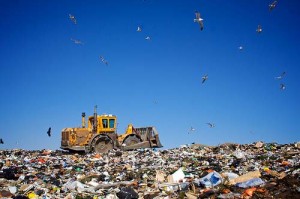Talking Trash
Green America’s February 2010 report, What Goes Up Must Come Down: The Sorry State of Recycling in the Airline Industry, takes the study of garbage to new heights. It seems that the average passenger generates 1.3 pounds of refuse per flight, which doesn’t sound like a lot, until you consider that …

Green America's February 2010 report, What Goes Up Must Come Down: The Sorry State of Recycling in the Airline Industry, takes the study of garbage to new heights. It seems that the average passenger generates 1.3 pounds of refuse per flight, which doesn't sound like a lot, until you consider that there were 678 million airline passenger trips in the U.S. alone in 2008—generating some 881 million pounds of trash. Seventy-five percent of this waste is recyclable, says Green America, but only 20 percent actually is recycled. Included in this rejected rubbish are enough aluminum cans to build 58 Boeing 747 jets, the organization claims.
The report ranks the recycling programs of 11 airlines commonly flown by Americans. While no carrier gets a "A," Delta Airlines comes out on top, earning a B- partially for the size of its in-flight recycling program (which includes aluminum cans, plastic bottles, plastic trays, beverage cups, newspapers, and magazines). Virgin America also receives a "B-" due, in part, to its practice of offering passengers local, organic, and sustainable foods on flights, and for flying Airbus A320s, which have fewer CO2 emissions than some other aircraft. Virgin Atlantic and Southwest Airlines earn a Gentleman's C, while Continental Airlines, JetBlue, American Airlines, British Airways, and Air Tran get lackluster "Ds". Failing grades are reserved for both United Airlines (which only collects and recycles plastic and aluminum beverage containers on flights that land in Hawaii) and US Airways (possibly because the company declined to participate in Green America's survey, and the existence of an in-flight recycling program is unknown).